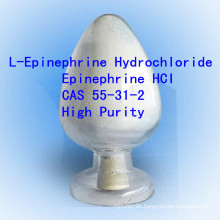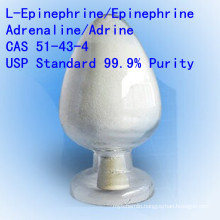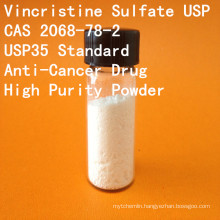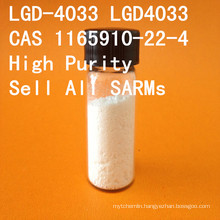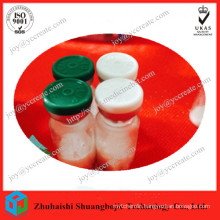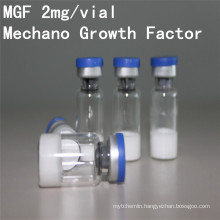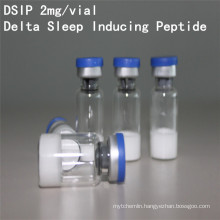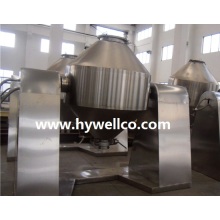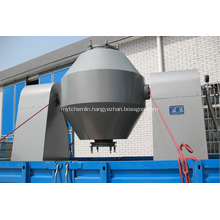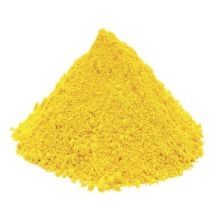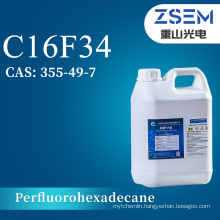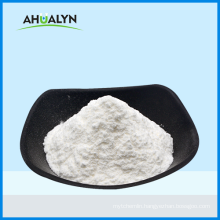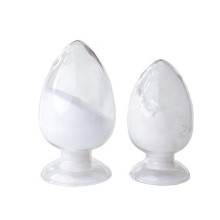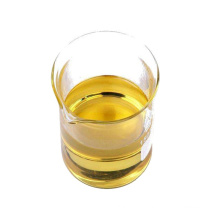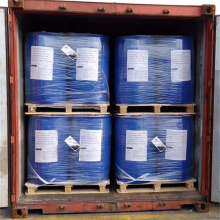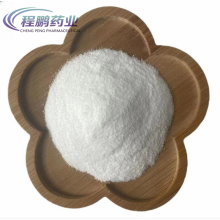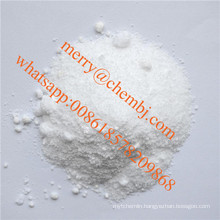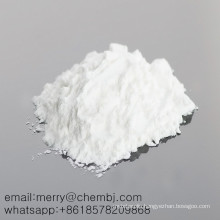Rapamycin 99% High Purity for Antineoplastic 53123-88-9
Basic Info
Model No.: 53123-88-9
Product Description
Model NO.: 53123-88-9 Customized: Non-Customized Suitable for: Adult Purity: >99% Einecs: 262-640-9 Molecular Weight: 914.18 Shipping: TNT, UPS, DHL, EMS, Hkems, FedEx Payment: Western Union, Moneygram, T/T Export Markets: Global Specification: ISO9001 HS Code: 29224999 Powder: Yes Certification: ISO 9001 State: Solid CAS: 53123-88-9 Molecular Formula: C51h79no13 Assay: 99% Delivery: Within 24 Hours After Payment Confirmed Brand: Shuangbojie Trademark: shuangbojie Origin: China Rapamycin 99% High Purity for Antineoplastic 53123-88-9
What is Sirolimus Rapamycin ?
Sirolimus also known as rapamycin. It is a chemical that was discovered by Suren Sehgal, as a product of bacteria discovered on Easter Island (the island is also known as Rapa Nui).It was approved by the US Food and Drug Administration in September 1999 and is marketed under the trade name Rapamune
Rapamycin
Synonyms:23,27-epoxy-3h-pyrido(2,1-c)(1,4)oxaazacyclohentriacontine;Nsc-226080;Rapa;Rapamune;Rapamycin;Rapamycin, streptomyces hygroscopicus;Rpm
Cas:53123-88-9
Mf:C51h79no13
Mw:914.18
Einecs:262-640-9
Product categories:Active pharmaceutical ingredients;Immunosuppressant;Pharmaceuticals;Cytokine signaling;Chiral reagents;Heterocycles;Inhibitor;Vivactil;Antibiotic
Chemical properties:White to off-white solid
Assay:99%
Usage:A triene macrolide antibiotic isolated from streptomyces hygroscopicus.Name derived from the native word for easter island, rapa'nui.Used as an immunosuppressant;Antirestenotic.Rapamycin is a triene macrolide discovered in 1995 as a metabolite of streptomyces hygroscopicus found in a soil obtained on rapi nui (easter island).Rapamycin displayed potent and selective antifungal activity, notably against candida albicans.Interest in the metabolite waned until the structural relationship to the potent immunosuppressant fujimycin (antibiotic fk506) was recognised in the mid-1980s.This recognition led to the re-discovery of rapamycin as a highly selective antitumour and immunosuppressant.Rapamycin inhibits the activity of the protein, mtor (mammalian target of rapamycin) which functions in a signalling pathway to promote tumour growth.Rapamycin binds to a receptor protein (fkbp12).The rapamycin/fkb12 complex then binds to mtor and prevents interaction of mtor with target proteins in this signalling pathway.
Packing:Foil bag or as required
Product Description:
Rapamycin (RAPA) is a new type of large ring lactone immunosuppressant. It is white solid crystal, melting point of 183-185 oC, lipophilic, soluble in methanol, ethanol, acetone, chloroform and other organic solvents, very slightly soluble in water, hardly soluble in ether. It was developed in the early 1970s, initially was as low toxicity antifungal drugs, and was found immunosuppressive in 1977. From 1989, RAPA was as a new drug for the treatment of organ transplantation rejection in trial, and from animal experiments and clinical application effects, it is of good curative effects, low toxicity and no new immunosuppressant nephrotoxicity. Now rapamycin is frequently as maintaining immunity drug for transplant organs (especially kidney transplant), to slow down the immune rejection of the organ in transplant surgery, however, scientists recently discovered another purpose: it can be used in the treatment of alzheimer's disease (senile dementia). To their interest, the main composition of rapamycin exists in Easter island isolated bacteria in the soil, and recent experiments show that the material used in the experimental rats can have ability to restore the memorization defects on the body.
Usage And Synthesis:
Immunosuppressant
Rapamycin (RAPA) is a new type of large ring lactone immunosuppressant. It is white solid crystal, melting point of 183-185 oC, lipophilic, soluble in methanol, ethanol, acetone, chloroform and other organic solvents, very slightly soluble in water, hardly soluble in ether. It was developed in the early 1970s, initially was as low toxicity antifungal drugs, and was found immunosuppressive in 1977. From 1989, RAPA was as a new drug for the treatment of organ transplantation rejection in trial, and from animal experiments and clinical application effects, it is of good curative effects, low toxicity and no new immunosuppressant nephrotoxicity. Now rapamycin is frequently as maintaining immunity drug for transplant organs (especially kidney transplant), to slow down the immune rejection of the organ in transplant surgery, however, scientists recently discovered another purpose: it can be used in the treatment of alzheimer's disease (senile dementia). To their interest, the main composition of rapamycin exists in Easter island isolated bacteria in the soil, and recent experiments show that the material used in the experimental rats can have ability to restore the memorization defects on the body.
Rapamycin is a large ring lactone antibiotic, it has the similar composition with Zyprexa (FK506), but has very different mechanism of immunosuppression. FK506 suppressor T lymphocyte proliferation from G0 to G1 phase, whereas RAPA blocks signal transduction through different cells, and the process of T cells and other cells from G1 phase to S phase. Compared with FK506, RAPA blocks the signal pathways of T lymphocytes and B lymphocytes depended on calcium or not.
Medical researchers from University of Chicago combined commercially available rapamycin oral tablets with grapefruit juice in the treatment of melanoma (a kind of malignant tumor disease common in European and American people), which could greatly improve the anticancer effect of other chemotherapy drugs, thereby prolong the survival time of patients. Studies have shown that rapamycin is easy to decompose by enzyme on entering the digestive tract, and the grapefruit juice contains a large number of coumarin and furan, which can inhibit the digestive enzymes from damaging the effects of rapamycin, so it can improve the bioavailability of rapamycin. It is said that the earliest Dutch doctor had found: grapefruit juice have a function to improve the oral absorption effect of sandimmune, which now is applied to the formulation of rapamycin by the European and American doctors.
Targeted Cancer Therapy Drugs
In recent years, studies found that as an intracellular kinase, the pathway abnormality of rapamycin target protein (mTOR) may induce many diseases. Rapamycin as mTOR's targeted inhibitor, can treat the tumors closely related to the pathway including kidney cancer, lymphoma, lung cancer, liver cancer, breast cancer, neuroendocrine carcinoma and gastric cancer, etc. Especially for LAM (lymphatic fibroid disease) and TSC tuberous sclerosis - the treatment effect of the two kinds of rare diseases is more apparent, and to some extent LAM and TSC can be considered as tumor diseases.
Side Effects:
Rapamycin (RAPA) has similar side effects to FK506. Found in a large number of clinical trials, its side effects are dose dependent, and reversible, therapeutic dose RAPA have not been found to have obvious renal toxicity, no gingival hyperplasia. Main side effects include headache, nausea, dizziness, nose bleeding, joint pain. Laboratory abnormalities include: thrombocytopenia, leukopenia, lower hemoglobin, high blood triglycerides, high cholesterol, high blood sugar, elevated liver enzymes (SGOT, SGPT), lactate dehydrogenase, low potassium, low magnesium levels, etc. Recently there have been reports that RAPA can produce eyelid edema, and the cause of the low level of plasma phosphate was thought to be RAPA immunosuppressive therapy on the basis of the extended phosphate from the elimination of the transplanted kidney. Like other immunosuppressants, RAPA increases the chance of infection, there are reports on pneumonia increasing, but the other opportunistic infection has no obvious difference between CsA.
Specifications:
For more details, please contact me at any time
How to proceed order:
First:Please let me know the items you are looking for, quantity, and the destination country.
Second:You confirm all details, and offer us purchasing order;
Third:We send the detail price of our product and offer the suitable shipping method for reference.
Fourth:You confirm the order and pay money 100% in advance and send us the detail address.
Fifth:We arrange the shipment according to your requirements.
Sixth:We offer after-sales service after you receive parcel Contact us if you need more details on Rapamycin. We are ready to answer your questions on packaging, logistics, certification or any other aspects about Pharmaceutical Intermediates、Chemicals. If these products fail to match your need, please contact us and we would like to provide relevant information.
What is Sirolimus Rapamycin ?
Sirolimus also known as rapamycin. It is a chemical that was discovered by Suren Sehgal, as a product of bacteria discovered on Easter Island (the island is also known as Rapa Nui).It was approved by the US Food and Drug Administration in September 1999 and is marketed under the trade name Rapamune
Rapamycin
Synonyms:23,27-epoxy-3h-pyrido(2,1-c)(1,4)oxaazacyclohentriacontine;Nsc-226080;Rapa;Rapamune;Rapamycin;Rapamycin, streptomyces hygroscopicus;Rpm
Cas:53123-88-9
Mf:C51h79no13
Mw:914.18
Einecs:262-640-9
Product categories:Active pharmaceutical ingredients;Immunosuppressant;Pharmaceuticals;Cytokine signaling;Chiral reagents;Heterocycles;Inhibitor;Vivactil;Antibiotic
Chemical properties:White to off-white solid
Assay:99%
Usage:A triene macrolide antibiotic isolated from streptomyces hygroscopicus.Name derived from the native word for easter island, rapa'nui.Used as an immunosuppressant;Antirestenotic.Rapamycin is a triene macrolide discovered in 1995 as a metabolite of streptomyces hygroscopicus found in a soil obtained on rapi nui (easter island).Rapamycin displayed potent and selective antifungal activity, notably against candida albicans.Interest in the metabolite waned until the structural relationship to the potent immunosuppressant fujimycin (antibiotic fk506) was recognised in the mid-1980s.This recognition led to the re-discovery of rapamycin as a highly selective antitumour and immunosuppressant.Rapamycin inhibits the activity of the protein, mtor (mammalian target of rapamycin) which functions in a signalling pathway to promote tumour growth.Rapamycin binds to a receptor protein (fkbp12).The rapamycin/fkb12 complex then binds to mtor and prevents interaction of mtor with target proteins in this signalling pathway.
Packing:Foil bag or as required
Product Description:
Rapamycin (RAPA) is a new type of large ring lactone immunosuppressant. It is white solid crystal, melting point of 183-185 oC, lipophilic, soluble in methanol, ethanol, acetone, chloroform and other organic solvents, very slightly soluble in water, hardly soluble in ether. It was developed in the early 1970s, initially was as low toxicity antifungal drugs, and was found immunosuppressive in 1977. From 1989, RAPA was as a new drug for the treatment of organ transplantation rejection in trial, and from animal experiments and clinical application effects, it is of good curative effects, low toxicity and no new immunosuppressant nephrotoxicity. Now rapamycin is frequently as maintaining immunity drug for transplant organs (especially kidney transplant), to slow down the immune rejection of the organ in transplant surgery, however, scientists recently discovered another purpose: it can be used in the treatment of alzheimer's disease (senile dementia). To their interest, the main composition of rapamycin exists in Easter island isolated bacteria in the soil, and recent experiments show that the material used in the experimental rats can have ability to restore the memorization defects on the body.
Usage And Synthesis:
Immunosuppressant
Rapamycin (RAPA) is a new type of large ring lactone immunosuppressant. It is white solid crystal, melting point of 183-185 oC, lipophilic, soluble in methanol, ethanol, acetone, chloroform and other organic solvents, very slightly soluble in water, hardly soluble in ether. It was developed in the early 1970s, initially was as low toxicity antifungal drugs, and was found immunosuppressive in 1977. From 1989, RAPA was as a new drug for the treatment of organ transplantation rejection in trial, and from animal experiments and clinical application effects, it is of good curative effects, low toxicity and no new immunosuppressant nephrotoxicity. Now rapamycin is frequently as maintaining immunity drug for transplant organs (especially kidney transplant), to slow down the immune rejection of the organ in transplant surgery, however, scientists recently discovered another purpose: it can be used in the treatment of alzheimer's disease (senile dementia). To their interest, the main composition of rapamycin exists in Easter island isolated bacteria in the soil, and recent experiments show that the material used in the experimental rats can have ability to restore the memorization defects on the body.
Rapamycin is a large ring lactone antibiotic, it has the similar composition with Zyprexa (FK506), but has very different mechanism of immunosuppression. FK506 suppressor T lymphocyte proliferation from G0 to G1 phase, whereas RAPA blocks signal transduction through different cells, and the process of T cells and other cells from G1 phase to S phase. Compared with FK506, RAPA blocks the signal pathways of T lymphocytes and B lymphocytes depended on calcium or not.
Medical researchers from University of Chicago combined commercially available rapamycin oral tablets with grapefruit juice in the treatment of melanoma (a kind of malignant tumor disease common in European and American people), which could greatly improve the anticancer effect of other chemotherapy drugs, thereby prolong the survival time of patients. Studies have shown that rapamycin is easy to decompose by enzyme on entering the digestive tract, and the grapefruit juice contains a large number of coumarin and furan, which can inhibit the digestive enzymes from damaging the effects of rapamycin, so it can improve the bioavailability of rapamycin. It is said that the earliest Dutch doctor had found: grapefruit juice have a function to improve the oral absorption effect of sandimmune, which now is applied to the formulation of rapamycin by the European and American doctors.
Targeted Cancer Therapy Drugs
In recent years, studies found that as an intracellular kinase, the pathway abnormality of rapamycin target protein (mTOR) may induce many diseases. Rapamycin as mTOR's targeted inhibitor, can treat the tumors closely related to the pathway including kidney cancer, lymphoma, lung cancer, liver cancer, breast cancer, neuroendocrine carcinoma and gastric cancer, etc. Especially for LAM (lymphatic fibroid disease) and TSC tuberous sclerosis - the treatment effect of the two kinds of rare diseases is more apparent, and to some extent LAM and TSC can be considered as tumor diseases.
Side Effects:
Rapamycin (RAPA) has similar side effects to FK506. Found in a large number of clinical trials, its side effects are dose dependent, and reversible, therapeutic dose RAPA have not been found to have obvious renal toxicity, no gingival hyperplasia. Main side effects include headache, nausea, dizziness, nose bleeding, joint pain. Laboratory abnormalities include: thrombocytopenia, leukopenia, lower hemoglobin, high blood triglycerides, high cholesterol, high blood sugar, elevated liver enzymes (SGOT, SGPT), lactate dehydrogenase, low potassium, low magnesium levels, etc. Recently there have been reports that RAPA can produce eyelid edema, and the cause of the low level of plasma phosphate was thought to be RAPA immunosuppressive therapy on the basis of the extended phosphate from the elimination of the transplanted kidney. Like other immunosuppressants, RAPA increases the chance of infection, there are reports on pneumonia increasing, but the other opportunistic infection has no obvious difference between CsA.
Specifications:
| Item | Specifications | Results |
| Description | off-white to yellow crystalline powder | Complies |
| Identification | The IR spectrum of Potassium Bromide preparation of the sample exhibits maxima at the same wavelengths as that of a similar preparation of in-house reference standard | Complies |
| The UV spectrum of 95% Ethanol preparation of the sample exhibits maxima at 267nm, 277nm, 288nm that of similar preparation of in-house reference standard. | Complies | |
| The retention times of the peaks for the Trans- and Cis-stereoisomers in the chromatogram of Assay preparation corresponds to that in the chromatogram of the standard preparation, as obtained in the Assay | Complies | |
| Loss on drying | ≤0.5% | 0.16% |
| Heavy metal | ≤0.002% | Complies |
| Total impurity | ≤2.0% | 0.76% |
| Single impurity | ≤1.0% | 0.67% |
| Cis-stereoisomer of Sirolimus | ≤5.0% | 2.4% |
| Assay | ≥98.0% | 99.2% |
For more details, please contact me at any time
How to proceed order:
First:Please let me know the items you are looking for, quantity, and the destination country.
Second:You confirm all details, and offer us purchasing order;
Third:We send the detail price of our product and offer the suitable shipping method for reference.
Fourth:You confirm the order and pay money 100% in advance and send us the detail address.
Fifth:We arrange the shipment according to your requirements.
Sixth:We offer after-sales service after you receive parcel Contact us if you need more details on Rapamycin. We are ready to answer your questions on packaging, logistics, certification or any other aspects about Pharmaceutical Intermediates、Chemicals. If these products fail to match your need, please contact us and we would like to provide relevant information.
Product Categories : Pharmaceutical Intermediates
Premium Related Products
Other Products
Hot Products
poly(dimethylamine-co-epichlorohydrin) 25988-97-0/39660-17-8 in stockTetrabutyl ammonium chloride(CAS NO.:37451-68-6)acrylic acid maleic acid copolymer/ 26677-99-6benzalkonium chloride/BKC/ 1227TOP QUANTITY benzalkonium chloride 80%Phenylboronic acid, CAS 98-80-6, OLED material2-Aminoimidazole hemisulfate, CAS 1450-93-71,2,3-Benzotriazole, Benzotriazole, BTA, 95-14-7Cas 317802-08-7 | 9,9-Dioctylfluorene-2,7-diboronic acid bis(1,3-propanediol)ester | 317802-08-7 | factory price; large stock30766-03-1 | 4-Bromopyridine-2-carboxylic acid | 4-Bromopicolinic acid | CAS 30766-03-1| factory price; large stock91-64-5 | Coumarin | 2H-1-Benzopyran-2-one | CAS 91-64-5 | factory price, large stock, MSDS, HS codePharmaceutical Intermediates Z-Thr-OH cas 19728-63-3 high purity 99%150629-67-7 Fmoc-Lys(Dde)-OH Pharmaceutical intermediatesBest price aluminum chlorohydrate achCAS NO.7727-54-0 factory price ammonium persulfateHigh Quality DL-Mandelic acid 611-72-3
